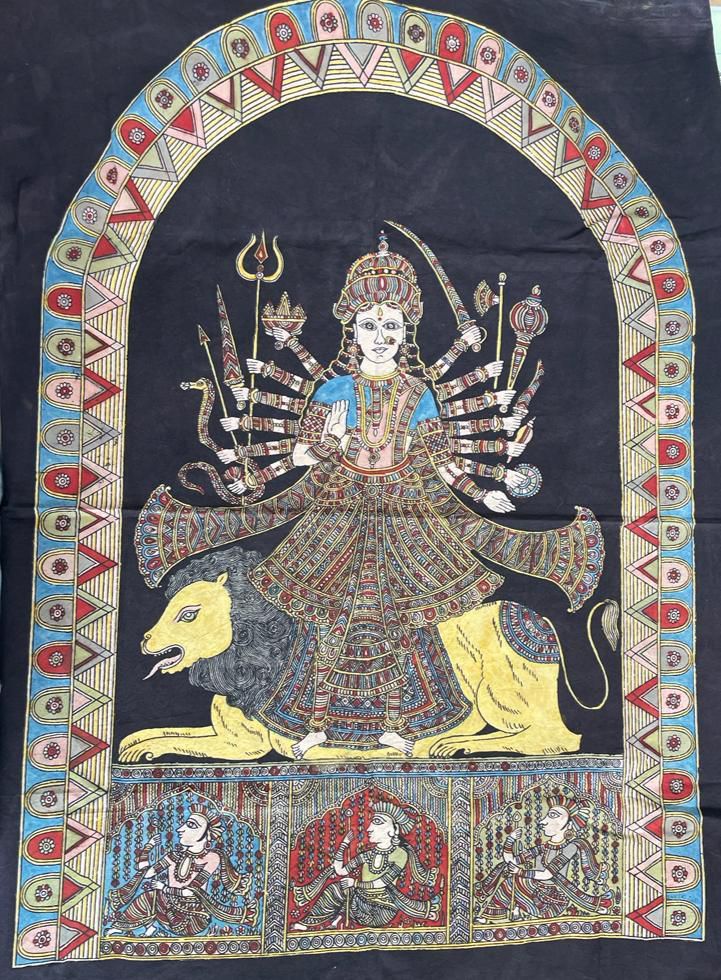PATAN PATAOLA SCARF
1.Context
PM Modi presented US President Joe Biden with Kangra miniature paintings; UK PM Rishi Sunak with 'Mata Ni Pachedi', a handmade Gujarat textile offered in temples; 'Pithora', tribal folk art from Chhota Udaipur, to Australian leader Anthony Albanese; agate bowls from Kutch to the leaders of France, Germany and Singapore; and a 'Patan Patola' scarf to his Italian counterpart Giorgia Meloni.
2.About Patan Pataola
The ancient art of double ikat or Patola woven in pure silk dates back to the 11th century. The Patola fabrics bear an equal intensity of colours and design on both sides. This peculiar quality has its origins in an intricate and difficult technique of dyeing or knot dyeing, known as ‘bandhani’, on the warp and weft separately before weaving
Patola is woven on primitive hand-operated harness looms made of rosewood and bamboo strips. The loom lies on a slant. The other commonly worn Patola is the Rajkot Patola, woven on a flat loom
The difference between Patan Patolas and Rajkot Patalo is that the motifs in Patan Patolas are sharp, while the Rajkot ones are hazy
3.The Salvis
One of the major practitioners of the dwindling art form is the Salvi family from North Gujarat. The last surviving family in Patola weaving is the Salvi family in Patan
The Salvi family said that in 1342 AD, the traveler Ibn Batuta had carried patolas as gifts to many kings. They were amply used in the 17th and 18th centuries as precious gift items
Before World War II, Indonesia was the major buyer of Patolas. Legend has it that King Kumarpal of the Solanki dynasty invited some 700 families of Patola weavers from Jalna (Maharashtra) to settle in Patan in North Gujarat, and the Salvis are among them.
4.The weaving process
The process involves warp and weft silk threads that are tied with cotton thread on portions marked with the proposed design. This tied portion then remains unexposed to colours while dyeing, which is followed by tying, untying, redyeing, and dyeing in different shades. Single and primary colours are applied one after another as mixed shades develop by overlapping. This makes the design stand out. The process is labour-intensive, time-consuming, and requires a high order of skill and dexterity
Traditionally, only pure silk and natural and chemical dyes were used, but since the last century, they have been replaced by fast-to-bleach and easy-to-dye chemical colours.
The product designs are based on traditional motifs called “bhat”, which include “narikunj”, “paan”, “phulwadi”, “rasbhat”, flowers, animals birds, human figures, etc





